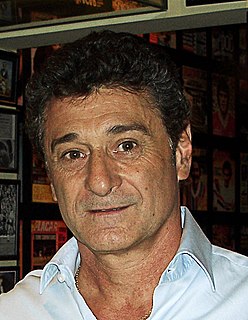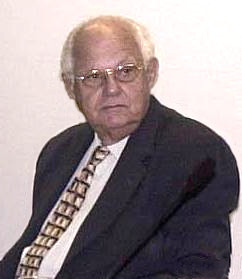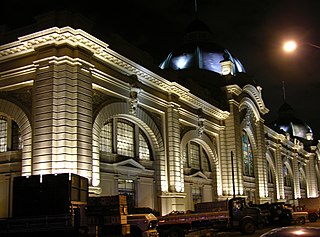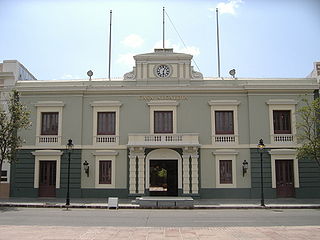
Orlando (1914–2002) and his brothers Cláudio (1916–1998) and Leonardo Villas-Bôas (1918–1961) were Brazilian activists regarding indigenous peoples. In 1961 they succeeded in getting the entire upper Xingu legally protected – the first huge indigenous area in all South America, and the prototype for dozens of similar reserves all over the continent.

The Bandeirantes were 17th-century Portuguese settlers in Brazil and fortune hunters. This group mostly hailed from the São Paulo region, which was known as the Captaincy of São Vicente until 1709 and then as the Captaincy of São Paulo. They led expeditions called bandeiras which penetrated the interior of Brazil far west of the Tordesillas Line of 1494, which officially divided the Castilian, later Spanish, (west) domain from the Portuguese (east) domain in South America.

Celso Monteiro Furtado was an important Brazilian economist and one of the most distinguished intellectuals of his country during the 20th century. His work focuses on development and underdevelopment and on the persistence of poverty in peripheral countries throughout the world. He is viewed, along with Raúl Prebisch, as one of the main formulators of economic structuralism, an economics school that is largely identified with CEPAL, which achieved prominence in Latin America and other developing regions during the 1960s and 1970s and sought to stimulate economic development through governmental intervention, largely inspired on the views of John Maynard Keynes. As a politician, Furtado was appointed Minister of Planning and Minister of Culture.

Alfonso Darío Pereyra Bueno is a Uruguayan former football player. Having played for Club Nacional de Football in his home country, he reached stardom playing for São Paulo FC as a centre-back along with Oscar. He is still remembered and revered as one of the best centre-backs in the history of Brazilian football.

The Tapirapé indigenous people is a Brazilian Indian tribe that survived the European conquest and subsequent colonization of the country, keeping with little changes most of their culture and customs. Stationed deep into the Amazon rainforest, they had little direct contact with Europeans until around 1910, and even then that contact was sporadic until the 1950s.

The Luz Station is the common name for a railway station in the Luz neighbourhood in São Paulo, Brazil. The station is part of the metropolitan rail system run by the CPTM. The station is mostly notable for housing the Museum of the Portuguese Language, established in 2006. The Luz Metro station is also located within the complex.
Simon Schwartzman is a Brazilian social scientist. He has published extensively, with many books, book chapters and academic articles in the areas of comparative politics, sociology of science, social policy, and education. In 1996, Schwartzman was awarded the Grand Cross of the Brazilian Order of Scientific Merit for his contributions to the cause and development of science in Brazil. In recent years, Schwartzman has written extensively on issues related to brain drain and brain circulation in the academic world, the Affirmative Action program in Brazilian higher education, and equity in education. He has been part of international teams of experts convened by OECD and The World Bank to advise governments on higher education, science and technology policies.
Placar is a monthly Brazilian sports magazine. Its first edition was issued by Editora Abril. on March 20, 1970, and since then the it has become the most successful sports publication in Brazil, even though it focuses fully on football It is currently published by Editora Caras.

Ignacy Sachs is a Polish-born French economist. He is considered to be an ecosocioeconomist for his ideas about development as a combination of economic growth, equalitarian increase in social well-being and environmental preservation. The term ecosocioeconomy was created by Karl William Kapp, a German economist and one of the authors who inspired the so-called political economy during the 1970s.

Tapirapé Biological Reserve is a biological reserve in the state of Pará, Brazil.
Armenian Brazilians are Brazilian persons who are fully, partially, or predominantly of Armenian descent, or Armenian immigrants in Brazil.
Lélia Abramo was an Italian-Brazilian actress and political activist.

The São Paulo Prize for Literature is a Brazilian literary prize for novels written in the Portuguese language and published in Brazil. It was established in 2008 by the Secretary of Culture for the State of São Paulo. Though not as old as other literary prizes in Brazil, such as the Machado de Assis Prize, the São Paulo Prize has quickly risen in prestige. For example, in 2011, there were 221 submissions for the prize. This rapid rise in popularity is partly because of the large cash prize. Every year two prizes of R$200,000 each are awarded—one for the best novel of the year by an established author, and the other for the best novel of the year by a debut author—making the São Paulo Prize the largest prize for a published work in Brazil, and one of the largest literary prizes in the world. Ten finalists are listed for each award, during the Festival da Mantiqueira, and the winners are announced on the first Monday of August in the Museum of the Portuguese Language.
Cássio Vasconcellos is a Brazilian photographer.

Daniel Munduruku is a Brazilian writer and educator. He is member of the Munduruku indigenous people. His children's books deal about traditional indigenous life and tales and have been awarded several prizes. Munduruku holds three undergraduate degrees in Philosophy, History and Psychology. He has a master's degree in Social Anthropology and a doctorate in Education by the University of São Paulo.

Boris Fausto is a Brazilian historian, political scientist and writer.

Ruth Guimarães (1920–2014) was the first Afro-Brazilian author to gain a national audience and critical attention for her novels, short stories, and poetry. A classical scholar, she translated works from French, Italian and Spanish and studied Greek and Latin, though her works reflected fables, folklore, herbal medicines and legends of Afro-Brazil. She established several cultural preservation societies, served as head of the Ministry of Culture for Municipality of Cruzeiro, São Paulo, and was a member of the São Paulo Academy of Letters.

The Municipal Market of São Paulo is a large public market in São Paulo, Brazil. It was designed by the architect Francisco Ramos de Azevedo and inaugurated on January 25, 1933 as a wholesale and retail post specializing in fruits, vegetables, cereals, meats, spices and other food products. The market is located in the Mercado neighborhood, a name that references the market, in the historic center of São Paulo. It is located near the Tamanduateí River in the old Várzea do Carmo, a floodplain of the river now primarily used as Dom Pedro II Park. The market was formally named the Mercado Municipal São Paulo in 1995. It is commonly known in São Paulo as the Mercadão, or "big market", and a noted meeting point for resident São Paulo and one of the most visited tourist spots in the city.

The São Paulo Museum of Sacred Art a museum dedicated to the collection and display of sacred art of Brazil. It is located in the Luz neighborhood of São Paulo in the left wing of the Luz Monastery, a religious institution founded in 1774 by Frei Galvão. The monastery is the only colonial building of the eighteenth century in São Paulo to preserve its original building elements, materials and structure. The monastery was listed as an architectural monument of national importance in 1943 by the National Institute of Historic and Artistic Heritage (IPHAN) and subsequently by the State of São Paulo Council for the Defense of the Historical, Archaeological, Artistic and Touristic Heritage (CONDEPHAAT).

The history of the book in Brazil focuses on the development of the access to publishing resources and acquisition of the book in the country, covering a period extending from the beginning of the editorial activity during colonization to today's publishing market, including the history of publishing and bookstores that allowed the modern accessibility to the book.

















